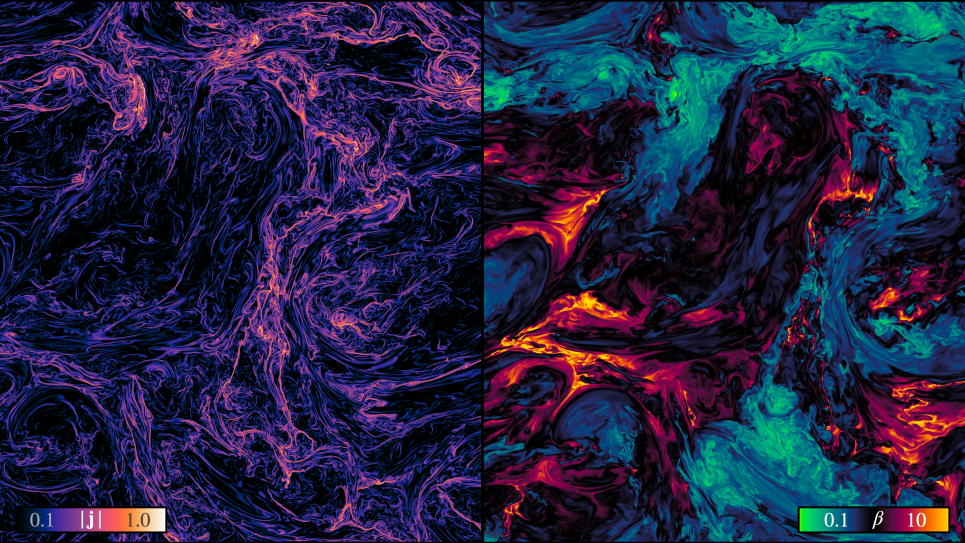
Resolving Cosmic Ray Transport by pushing the Frontier of MHD Turbulence
By running massive simulations of magnetized turbulent astrophysical plasma t, this project will determine the long-debated source of cosmic ray scattering, which limits understanding of galaxy formation and black hole growth. The simulations will provide the ideal environment for cosmic ray propagation and unveil the underlying nature of turbulence.
Cosmic rays (CRs) are high-energy charged particles that pervade the universe and play a crucial role in shaping galaxies and their surroundings. Although incredibly low in number, their combined energy density rivals the kinetic, thermal, and magnetic energy in galaxies, underscoring their significance. CRs are accelerated and injected into the interstellar medium, where they become confined by magnetic fields. This confinement regulates CR transport, determining CR escape from and feedback on astrophysical sources.
CR transport remains an open problem. The leading theories of how CRs scatter and propagate have significant theoretical uncertainties and inconsistencies with observations. This work aims to resolve the long-standing “CR transport problem” using pioneering exascale simulations that model, for the first time, the propagation of CRs over a broad range of energies through fully resolved patches of the turbulent magnetized interstellar medium.
These simulations will reveal the key physics of how CRs interact with and scatter magnetic fields, enabling us to develop a new predictive model for CR transport. The same calculations will provide fundamental new insights into the nature of magnetohydrodynamic (MHD) turbulence in astrophysical plasmas.
This research will transform our understanding of CR transport and feedback, MHD turbulence theory, and the regulation of star formation and black hole growth within galaxies, paving the way for a new generation of galaxy-formation simulations that incorporate self- consistent CR feedback and more realistic plasma physics.